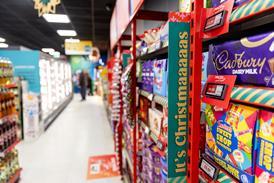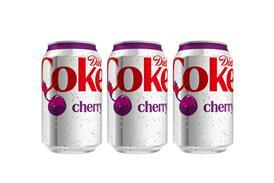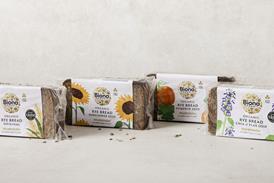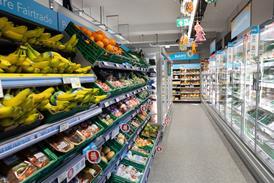The Chancellor stood before the House of Commons last week with a smile on his face to impart the news that the economy is on the up. GDP is forecast to grow by 2.7% this year, house prices are rising and unemployment levels are dropping. And yet the hangover of the downturn is still being felt. The bite of the recession has left shoppers conscious of their budgets, and means they will be checking the prices of food when shopping in your store.
According to a Parago shopper behaviour study, 73% of shoppers across all income levels have become more sensitive to price, while 44% felt their purchasing power had decreased over the past 12 months. Parago chief marketing officer Rodney Mason believes that consumers are more savvy than ever and have become more considered shoppers, unwilling to splash the cash like they did pre-recession.
Retailers have high hopes for newcomer Independent
With P&H and Costcutter’s new buying joint venture The BuyCo now up and running, the convenience sector is getting its first look at the new Independent own label range. UK stores supplied by P&H already have access to products from the portfolio and in Northern Ireland, Costcutter stores will be receiving products from the range this week and will be phasing in the lines over the coming month.
Mark McAleer, of Costcutter Omagh in Co Tyrone, has high hopes for the three-tiered range. “We’ve had some samples of the new Independent range in already and I think it’s of very high quality,” he says.
“It’ll be at a good price and the three tiers will offer something to all stores and customers. We’ll be looking at the middle Core tier for our store mostly, with some elements from the Trader and Specialist ranges to offer customers extra value.
“Obviously, we won’t know how it performs until the range actually hits the market, but I really can’t see how it won’t work and go down well with customers.”
Mark says the BuyCo arrangement is the way forward for independent retailing. “We’re stronger if we work together and the more retailers that buy into this, the more likely it is that we’ll get a good deal.”
He believes that Northern Ireland will be a good testing ground. “If they get Northern Ireland right, they’ll get the rest of the UK right,” Mark predicts. “The convenience market is very important here and customers are using local stores to do their weekly shops, possibly more than in the rest of the UK.”
“Across the board, shoppers now seek out the very best prices and are willing to go out of their way to save even a little bit,” he says. “On the brighter side of heightened price sensitivity, they are still shopping regularly and feel emotionally rewarded when they find significant savings.”
Momentum Instore business development manager Tim Ellis backs up this view. “We are seeing a growing demand among consumers for a return to the traditional concepts of great customer service and good quality products,” he says. “However, there will always be shoppers looking for a bargain, and while customers might be willing to splash out more for special treats, they will not want to pay over the odds for staple products.”
Ellis says that the habits of the recession aren’t going away any time soon. “People have become used to not paying full price for anything and this habit will be hard to kick,” he says.
He predicts the trend will have an impact on price mechanics, too. “As shoppers demand more transparency so they can easily work out just how good a deal they are getting, confusing promotional discounting will have to stop.”
Becky Sparkes, who runs three Spar stores in Birmingham, says her customers haven’t recovered from the sting of the recession just yet. “It may be officially over, but the marketplace certainly doesn’t feel like it is,” she says.
“Customers are so much more savvy than they were and know that stores are looking to compete with each other on value and so they’re shopping accordingly, with no loyalty to one particular store. We see them trying much harder to reduce the amount of money they’re spending by the goods they put in their basket. Plus the competition in the sector is a lot tougher, which adds to the pressure felt by retailers as more multiples enter the market.”
Becky says that customers still have the perception that convenience stores are expensive, and the sector will have to work hard to overcome that view. “They don’t always know that we can be as competitive as the multiples and so we may get overlooked when it comes to choosing stores,” she says. “We send leaflets out regularly to promote our value offering and have plenty of POS in store to let customers know what value lines we’re carrying. It’s a constant battle to make sure that our shoppers know we can offer value for money.”
Own label advantage
In order to help customers realise the good value that convenience stores offer, Becky stocks the Spar Everyday Value range, as well as promoting a Tesco pricematch promise. “Having a strong own-label brand helps with your core identity, but it also helps with showing customers how you offer value,” Becky says. “Own brand does well with us. Of course, it varies from store to store as to how successful, but a lot of our overall top 50 best-selling lines are own labels.”
Shaun Marwaha of Shaun’s Premier in Glasgow says that the Euro Shopper range goes down a treat with his customers and offers some healthy margins for the business. “The minimum POR for the Euro Shopper range is 30%, so it balances out value for our shoppers and ensures we get a good return,” he says. “That’s exactly what independent retailers want from an own-label line.”
Plenty of choice
To help drive awareness of own label, Shaun has a large display of Euro Shopper products that covers a wide spectrum of categories. “We show off what the range has to offer customers and that it’s not just a few items but rather they can do a full shop with own-label products. I also have regular tasting sessions with new own-label produce to let customers know what we have in the store. With the high POR, it’s definitely worth doing.”
Shaun believes that own brand has upped its game and customers have responded to this. “I don’t think it’s just a case that customers have been forced to buy own label, but rather that the quality has improved,” he says. “They used to be cheap products at a cheap price, but now they’re good quality products at a value price and customers have noticed this and it’s made a huge difference in sales.”
Andrew Whyte of Prees Village Stores in Shropshire agrees that customers are noticing the difference in price between own label and big name brands, but not the difference in quality.
Is the tide turning?
The talk is of green shoots and an improving consumer outlook, but do the statistics back up the politicians’ claims? According to the Markit UK Household Finance Index for February 2014, there was a positive outlook among UK consumers for the first time since the survey began in early 2009, with households reporting the lowest squeeze on savings.
Markit senior economist Tim Moore says: “The tide has started to turn for UK household finances, as falling inflation and improvements in labour market conditions helped reduce the squeeze on budgets to the lowest for at least five years in February. Adding to hopes that household finances are on the cusp of a rebound, the latest data finally pointed to positive expectations for financial wellbeing over the year ahead.”
Signs may well have been brighter, too, had the UK not been buffeted by the recent storms. Adds Moore: “There are early signs that the storms and unusually wet weather have caused a setback for retail sales across some parts of the UK. In particular, people living in the South West reported a marked dip in their workplace activity during February, while the trend in overall UK household spending was the weakest for just over two years.”
“It’s very difficult for customers to justify the price difference between the two when you can pick up a very similar product for as little as quarter the price of the named brand,” he explains. “People are no longer willing to pay a higher price for a similar product.”
His shoppers aren’t the only ones turning to own label. According to a survey from Canadean Custom Solutions, 81% of UK adults are happy to buy private label brands. About three in 10 people (30%) say that at least half of the items they buy are store own brands.
The survey found that 55% of UK adults believe that the quality of private label food and drinks is just as good as branded alternatives and that 46% of respondents believe that branded and non-branded food and drink is produced in the same factory and it is only the packaging that is different.
Canadean Custom Solutions research manager Michael Hughes believes that “the figures show that continued growth of private label is not just a knee-jerk reaction by consumers to a recessionary environment”. He adds: “The growth has been helped by an increasing level of scepticism towards the food and drink industry as a whole, with consumers ultimately believing branded and non-branded groceries are the same, with only different packaging and advertising resulting in different retail prices.”
The survey revealed that biscuits (53%) are the products people are most likely to buy private label, something Andrew finds in his own store, where own-label snacks and treats are the key areas of growth. “These are discretionary spends on top of the basket essentials so those looking to save money but who still want a treat will opt for the own-label products,” he says. “A lot of mothers with young children will shop this way as they’re looking to cut costs wherever possible, but not sacrificing treats for them and their children.”
Andrew adds that saving money by purchasing own-label products isn’t restricted to parents, and the younger audience is doing it as well. “Teenagers will buy own-label energy drinks rather than spending the extra money on brands,” he says. “As long as it’s of decent quality then they don’t mind. People are more concerned with saving money than purchasing expensive brands.”
Becky says that she has also noticed that manufacturers of brands have made more of an effort to communicate a value message. “Brands such as Coca-Cola Enterprises and Heinz are trying harder to bring their prices down and offer better value to customers,” she says. “This really helps as there will always be customers who want branded items and it helps if they’re good value as shoppers begin to associate convenience stores more with value.”
Mark McAleer of Costcutter Omagh in Co Tyrone believes that there’s still a place for branded items in a c-store if they offer value. “There are always customers who want Red Bull and who are happy to pay for it, but we’ll sell many more Boost energy drinks because they’re a brand name at a value price,” he explains. “That’s what customers are looking for - quality and value.”
Heritage gets an overhaul
With new entrant Independent about to hit the market, the own label sector is preparing for upheaval, with brands looking to consolidate their position. Among those is Nisa, which is making significant investment in its Heritage range.
In an effort to grow Heritage from a £200m brand to a £500m one, it has appointed a specialist packaging agency to help develop the range.
Nisa marketing director Ian Bishop is enthusiastic about its success. “Nisa is confident in its Heritage own label range,” he says. “It’s proven and trusted, not to mention award-winning, and it is believed that it can grow. Nisa’s vision is to develop the Heritage brand further in the next year, creating a unique own brand range fit for the future.”
He says that Nisa has readjusted the range to cater for current market trends. “We have observed the trends and influences affecting shopper behaviour, such as people being increasingly time poor, the trend towards scratch cooking, eating in being the new eating out, and the fact the UK has an ageing population who tend to shop locally,” explains Bishop.
He says that rather than cutting back on brand names, consumers are reassessing the way they shop. “They’re shopping smarter than before and planning ahead for their meals,” says Mark. “We get a lot of builders in and at lunchtime they would buy a sandwich, drink and snack, but now they, or their partners, will buy a loaf of bread and some cheese and make sandwiches for the week ahead to save money. You need to offer the products that will help them manage their budgets better over the course of a week.”
Mark says that in order to take advantage of changing shopper habits, retailers must make the products as visible as possible. “Promotional displays with clear pricing, especially a round pound, help shoppers know exactly what they’re spending on a product,” he says. “They want that transparency when they shop and creating a promotional display helps them identify your value offers easily.”
Even with promotional displays, Mark insists that store owners need to make customers more aware of the value that convenience stores can offer, and that they could learn from the competition on this. “Pound shops make customers believe that they offer a better price to customers on every item, but that’s not always the case. There are plenty of lines that we offer better value on, but the pound shops are just better at shouting about it,” he says.
“Perhaps we should take a leaf out of their book and be promoting our value proposition better.”
Becky agrees that displaying promotional products together is key for showing value. “Rather than customers wandering around the shop, chancing upon the deals, it’s so much easier to have them front and centre for them so they can’t miss them.”
She adds that a lot of brands are introducing pricemarked packs to help communicate value better to shoppers. She believes they have a big part to play in communicating value to the customer. “It can sometimes feel like our margins are being dictated by the supplier, but I’d rather have them as an option than not,” she points out.
“As the multiples don’t usually stock pricemarked packs it gives us a point of difference over them, and when the margin isn’t ridiculously small they’re worth having.”
Momentum Instore’s Tim Ellis says that pricemarked packs benefit both retailers and their shoppers in conveying value for money. “Pricemarked packs have advantages for the retailer and also the customer,” he says. “As the price is clearly displayed on the pack customers are in no doubt about what they will be paying when they reach the checkout, while the retailer doesn’t have to worry about keeping shelf-edge price labels in place and up to date.
“They also reassure customers that they are getting a great deal straight from the brand, reinforcing their relationship with that brand and driving sales.”
However, he sounds a word of caution against having an over-reliance on them. “They can be extremely successful, but a fixed price means a fixed margin, therefore it is essential to get the balance of pricemarked packs and higher margin products just right.”
Shaun backs the view on margins and says he does his homework before deciding whether to stock pricemarks. “Some of the margins offered are unacceptable and we’re almost making a loss on them when you take into account operating costs for the business,” he explains.
“It varies from category to category as regards the minimum margin we want to make, but we have to be very careful about which pricemarked packs we stock as they have to be profitable for us as well as offering value to the customer.”
Cool prices on ices from Spar
Spar has added a summer range of 480ml ice cream tubs, pricemarked at £2. Flavours include cookie dough, caramel shortcake, chocolate fudge brownie and strawberry cheesecake. Two new handheld lines also join the portfolio: Belgian chocolate ice creams and strawberry cones. Both carry pricemarks of £1.
Wicked price
SHS Drinks has made WKD 70cl bottles available in pricemarked packs. Following the success of the pricemarked four-packs, WKD Blue, Iron Brew and Green 70cl bottles are available in £2.99 flashed packs. WKD Blue PMP packs also contain a POS kit for limited-edition Brazilian and a £1-off coupon.
Value cuts under SuperValu brand
Londis has revised its core fresh meat range, introducing eight key SuperValu fresh meat lines and, for the first time, four Made Easy lines. The eight lines are 100% British and pricemarked at £3-£5.
Not so blue pricepoint
Imperial Tobacco has extended its Lambert & Butler range with new L&B Blue. Available in packs of King Size 19s cigarettes and also in a smooth variant, L&B Blue is positioned within the sub-economy price sector with an rrp of £6.40.
The right price
Shoppers will find it hard to miss the value message splashed on new Boost Drinks flavours sugar-free pink lemonade, citrus zing and exotic fruits, available from next month. The 250ml cans and 500ml bottles feature bright 49p and 79p flashes.
Jumbo value from Nicky
Nicky has launched a Jumbo Roll kitchen towel pricemarked at £1. The £1 roll aims to meet the trend of consumers looking for good value deals and pricemarked packs without having to give up quality. Its single roll format also helps maximise shelf space.
Brite and breezy oven cleaner
151 Products has launched a wipes version of its oven and grill cleaning product, Oven Brite, as a cheaper alternative. The Oven Brite Wipes (rrp £1.49) join the supplier’s two-strong cleaning range in spray and boxed kit formats.
Xtra Cola offer from Barr
AG Barr’s low-calorie cola Barr Xtra Cola makes its debut with a pricemark. The variant comes in 500ml PET bottles (rrp 99p) and 330ml cans (rrp 39p). The launch is being supported by a social media campaign running through to the end of April to drive awareness of the new line and encourage trial.
JTI extends Sovereign brand
JTI is extending its Sovereign brand with a new value cigarette, Sovereign Smooth flavour. Available nationally in all channels, Sovereign Smooth Flavour is launching in King Size 10s and 19s formats, with pricemarked packs at £3.39 and £6.28. Standard packs will also be available.
Source
Aidan Fortune

























No comments yet